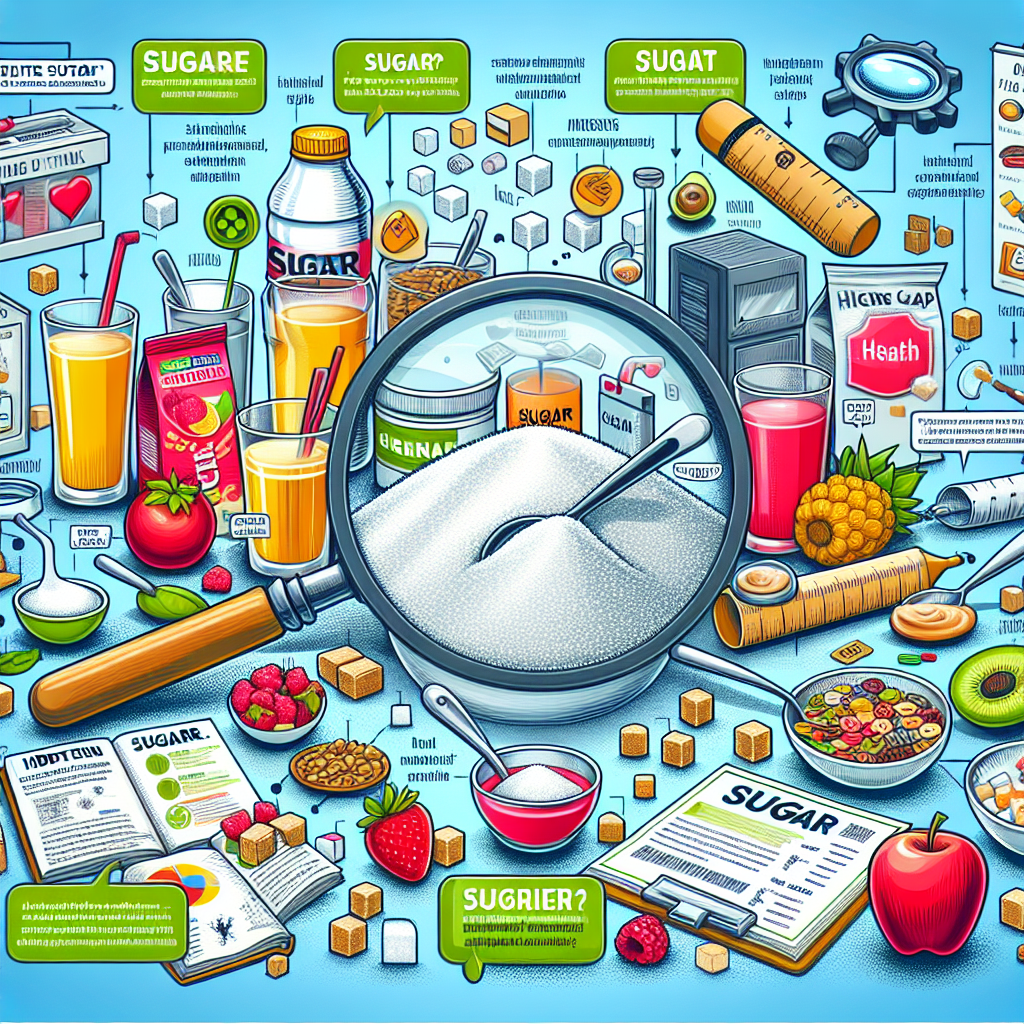-
Table of Contents
How to Spot Hidden Sugars in “Healthy” Foods

With the rise of health consciousness, many people are making an effort to eliminate excess sugar from their diets. However, sugar has a sneaky way of finding its way into our meals, even those that are marketed as “healthy”. This article will guide you on how to spot hidden sugars in foods that are often perceived as healthy. We will delve into the various names of sugar, the foods where they are commonly found, and how to read food labels effectively.
The Many Names of Sugar
Sugar is not always listed as ‘sugar’ on food labels. It often hides under different names, making it difficult for consumers to identify. Here are some of the most common aliases of sugar:
- Fructose: This is a natural sugar found in many fruits and honey.
- High-fructose corn syrup (HFCS): This is a sweetener made from corn starch and is commonly found in many processed foods and drinks.
- Sucrose: This is the scientific name for table sugar.
- Dextrose: This is a sugar derived from starches.
- Maltose: This is a sugar found in malt.
- Lactose: This is the sugar found in milk.
These are just a few examples. There are over 60 different names for sugar listed on food labels.
“Healthy” Foods with Hidden Sugars
Many foods that are marketed as healthy can contain surprisingly high amounts of sugar. Here are some examples:
Yogurt
While yogurt is often touted as a healthy snack, many flavored yogurts are packed with sugar. For instance, a single serving of flavored yogurt can contain up to 19 grams of sugar. That’s almost 5 teaspoons!
Granola and Protein Bars
Granola and protein bars are often perceived as a healthy snack option. However, many of these bars are loaded with sugars. Some bars contain up to 15 grams of sugar, which is equivalent to almost 4 teaspoons.
Fruit Juice
Fruit juice is often seen as a healthy alternative to soda. However, many fruit juices contain as much sugar as soda, if not more. A 12-ounce serving of apple juice can contain up to 39 grams of sugar, which is equivalent to about 10 teaspoons of sugar.
How to Read Food Labels Effectively
Reading food labels can be a powerful tool in identifying hidden sugars. Here are some tips on how to read them effectively:
- Check the ingredients list: Ingredients are listed in order of quantity, with the ingredients used in the greatest amount first. If sugar (or one of its aliases) is listed in the first few ingredients, the product is likely high in sugar.
- Look at the nutrition facts: Check the ‘Total Sugars’ line on the nutrition facts label. This includes both natural and added sugars. The American Heart Association recommends that women limit their intake of added sugars to no more than 6 teaspoons per day and men to no more than 9 teaspoons per day.
- Be aware of serving sizes: The serving size listed on the nutrition facts label may not reflect how much you typically eat or drink. For example, if the serving size is 1 cup and you typically eat 2 cups, you will need to double the amount of sugar listed.
Conclusion
While it can be challenging to spot hidden sugars in “healthy” foods, it is not impossible. By understanding the different names of sugar, being aware of the foods that often contain hidden sugars, and knowing how to read food labels effectively, you can make more informed decisions about your diet. Remember, the key to a healthy diet is balance. While it’s important to limit your intake of added sugars, it’s equally important to ensure you’re getting a balanced intake of other nutrients as well.









